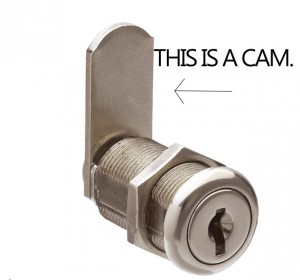 I just finished filming the latest LockNet video newsletter (which you can find here) and this week I had the pleasure of discussing cabinet and drawer locks with Vicki Heilig.
I just finished filming the latest LockNet video newsletter (which you can find here) and this week I had the pleasure of discussing cabinet and drawer locks with Vicki Heilig.
These aren’t necessarily the first things you think of when you think of security, but they’re a popular topic in the industry. Take a minute and think about how many stores carry expensive items such as jewelry and watches.
Those stores require cabinet locks.
What about pharmacies with life-saving medication?
You guessed it—cabinet locks.
So while they aren’t necessarily sticking out in our minds, they’re truly all around us, which is why they’re really important.
The Types of Cabinet and Drawer Locks
Cam Locks
Cam locks are by far the most popular choice when dealing with cabinets and drawers. This is because they’re the most versatile option and have quite a few variations.
For the most part, cam locks are used on cabinet doors that slide or are hinged, but can be used on drawers, if needed.
There’s a cam on the lock that slides behind the fixture and this prevents the door or drawer from being opened.
The pricing for these locks can vary. The cost is based on the length of the housing on the lock (a longer housing requires more material, thus making the lock more expensive), the length of the cam, and the type of finish that is chosen. These locks have price fluctuation as opposed to other cabinet and drawer locks, so keep that in mind when putting together a budget.
Plunger Locks
Plunger locks are another option of cabinet and drawer locks. These are typically used on sliding glass doors and contain a bolt that slides back and forth for easy opening. When locked, the bolt remains inside a slot to keep the glass door from sliding.
Ratchet Locks
Ratchet locks are also used on sliding glass doors. One end of the lock hooks around the end of the glass door, holding it in place with an adjustable bar.
These locks can be pretty bulky, but recently they’ve begun to streamline the locks and now seal directly onto the glass instead of hooking around the edge. While this reduces the size of the lock overall, once it is in place, it can’t be removed unless the glass is broken.
These are a few of your options when it comes to cabinet and drawer locks, but that definitely isn’t all. If you’re interested in learning about more, contact us today. We are more than happy to help you out!
